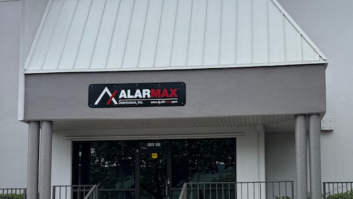TWICE:Has the custom-installation market contracted for the third consecutive year,given that single-family housing starts have dropped for the third consecutive year in 2008? Do you see any signs of a custom-market turnaround?
Henderson: It is my observation that 2008 was a year of significant contraction for the overall custom-installation market. What we hear consistently is that the very large jobs have been maintained, but there has been a lot of weakness in the middle tier. There are no clear signs that this trend is reversing anytime soon, but one hopes that pent-up demand will be released after the presidential election.
Baldwin: The housing industry as a whole is experiencing a “ZIP Code economy.” Even within a particular city, the real estate market varies. Highly desirable neighborhoods are holding value, and MLS listing times are only slightly up. States such as mine (Texas) are less affected by the economy and the housing dilemma and should not experience the volatile swings (highs and lows) that other states are feeling now. NAHB economists are projecting some stabilization in the first quarter of 2009, which should help all suppliers to the building industry.
Starkey: There remain some hot spots for upper end projects and MDU-related projects. The lower to middle parts of the market remain weak and could get even more challenging. It appears we may be in for a 12- to 18-month turnaround.
Hench: At present, I think we’re in for a flat to down market well into 2009. The housing “engine” that helped fuel growth in 2006 is not running, and will probably not recover until late 2009 at the earliest. Many affluent consumers, who kept the high end of the market afloat, have put off purchases due to uncertainty and will likely continue to do so until they see stabilization in the financial markets.
Detmer: This is the first year that Niles is seeing contraction in the custom installation market. I suspect this is because Niles solutions are geared more toward custom homes or high-end retrofits and less toward the entry-level and step-up home markets. As of November, we are not seeing a broad turnaround in the market, but we are being contacted by more dealers who want to consolidate their business with us in order to have one core custom vendor as a matter of cost savings.
Soumbasakis: No signs of a market turnaround as of yet. Until the financial markets stabilize and consumer confidence increases, we expect demand to be challenged. We are seeing pockets of strength as dealers look for new opportunities either in new markets, such as light commercial, or with new products. But overall demand is lower due to the economic climate.
Supran: Yes, the custom market has likely contracted. As vendors, we are often the last to see the pipeline of projects dry up and will likely be the last to see the turnaround. I don’t think we have seen the bottom of the market yet, but my hope is that the turnaround comes quickly.
Baron: The conventional wisdom is that we won’t see a significant uptick in new housing starts until the current inventory is flushed out, which could be sometime in the middle of 2009. At Fall EHX, where old and new integrators convened in Southern California, new business was hard to come by, and the mood was not optimistic for the near future.
Porritt: The custom market experienced some contraction of sales last year, but it has not been a three-year phenomenon. In fact, for several years prior the custom market experienced very strong sales. A turnaround is in the offing, but I don’t think we’ll see it before Q3. It’s one of the reasons we’re focusing on retrofit products, since they will be in a good to ignite interest in multiroom entertainment.
Keep in mind that whenever the market picks up, it will probably be an additional six months before we are back to normal. Retrofit products – especially those based in PLC solutions – are easy to implement, less expensive, and are therefore an easier sell.
TWICE:The custom market came through previous economic downturns unscathed. Why not now? It was said the industry’s core customer — affluent consumers buying custom-built homes – wasn’t much affected by economic turmoil. Is this time different because, perhaps, a speculative bubble in high-tier homes built on spec also burst?
Henderson: I think there is some truth to that. Clearly, the financial sector melt-down has impacted the upper end clientele. Again, it seems the market just below the very wealthy has been impacted harder. These are people who relied on relatively easy credit and home equity to a greater degree.
Baldwin: Census numbers show that new housing starts fell as much as 40 percent in certain regions of the country from September 2007 through September 2008. Many assumed that this decline was mostly felt in the production builder market or small-volume builder (defined as a builder/developer averaging about 100 homes per year). However, homes with a construction value of $750,000 fell at the same rate for both speculative and custom starts. This most certainly affects our channel.
Starkey: Certainly, this downturn is different, led by much of the high-end investor market going away and compounded by the stock market downturn as well.
Hench: We need to view the current situation differently than economic downturns of the past. The combination of the financial crisis, high commodity prices, unaffordable homes and unavailable credit have moved us into uncharted territory as far as assessing the effect it will have on the CI market.
Soumbasakis: Both the mid-range and high-end home markets have been affected by the housing downturn. It took a bit longer for it to affect dealers focused on high-end markets because the sales cycle in these homes is longer due to the lengthy construction times. The fast decline in financial markets has given even the affluent customers hesitation in their purchasing decisions. The jobs that exist have been more modest as a result.
Supran: The custom installation industry has never had to face an economic downturn that is this complex in nature. This is a credit crisis as much as it is a housing crisis, and the combination has simply led to fewer custom installation projects in the U.S. market.
That being said, there is a portion of the custom market that is relatively immune to an economic downturn. Much of the industry we refer to as custom includes semi-custom and high-end production homes. Clearly these mid-market segments of the custom industry have been hit very hard by the housing crisis, and this has had an effect on our industry. That being said, there remains a segment of the housing market that is still strong, which is high-end custom. These projects often involve an architect and have multi-year time horizons. While some of these projects have been stalled and delayed, we have not heard that many are being completely canceled. We firmly believe that this segment of the market will continue to be strong as these projects are already underway and will be completed, albeit at a slower pace.
Baron: The bread and butter installations that have been largely responsible for the huge increase in custom sales from 2000-2005 were actually in the $10K-$30K range, and these sales have all but collapsed. Although high-profile installations continue to dominate the media, it’s misleading to believe that these fueled most of our growth. The explosion in professionals coming into the market from IT, low voltage and integrators to start their own businesses was in direct response to sales in this range, and the “I can do this” reaction.
Porritt: It only makes sense that a slowdown in building starts will be felt by the custom market. After the building bubble of the past few years, we have to come to grips with the fact that Americans are going to be much more conservative with their income, taking on a more European approach that places greater emphasis on retrofit solutions rather than full-scale installations.
However, al the talk about “cocooning” will finally become reality, as more consumers adjust their spending habits. Here again is where we see the big opportunity – catering to this group with products that are easy to install, implement and enjoy.












